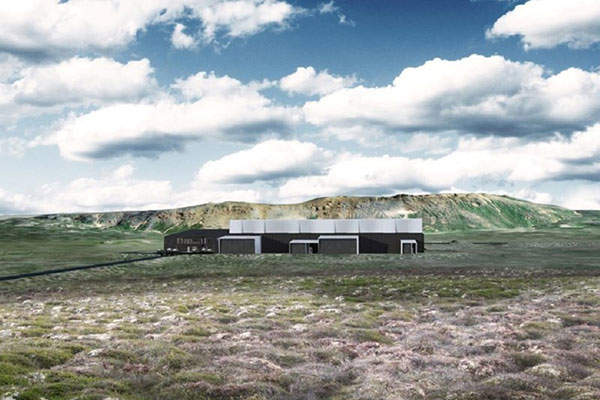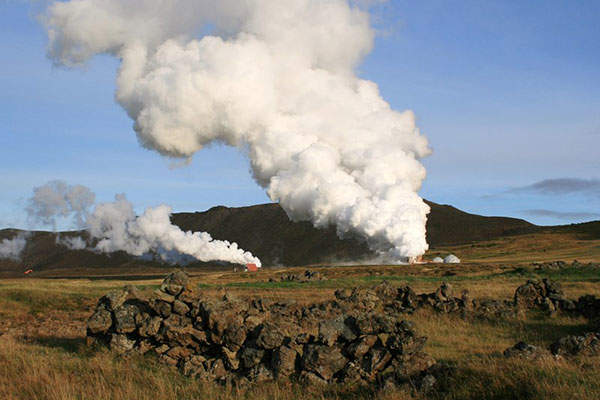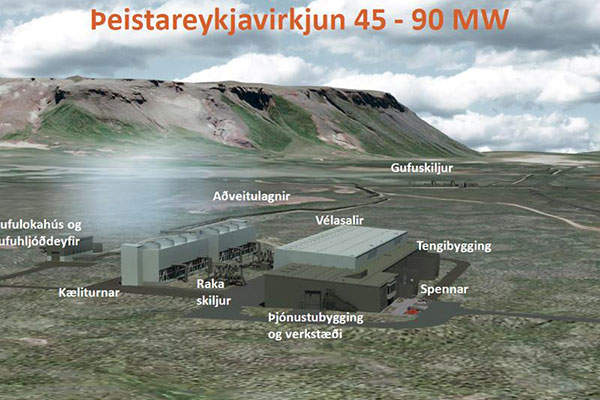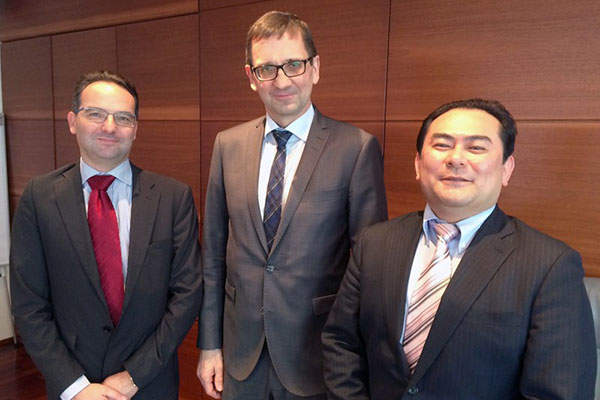The Theistareykir (Þeistareykir) geothermal power station is being developed by Þeistareykir, a subsidiary of the National Power Company of Iceland (Landsvirkjun), in north-east Iceland. Phase one of the two-phased 90MW (2 x 45MW) power project is scheduled to start operations in October 2017.
The project is being developed to primarily complement the growth of the industrial sector in north-eastern Iceland. The project site, covering an area of approximately 24km², is located roughly 50km from the city of Akureyri.
The construction of the geothermal power station started in April 2015 and is expected to generate approximately 145 jobs. The annual output from the two-phased project is expected to be 738GWh. Phase two of the project is expected to start operations in 2018.
The Theistareykir project background
The Hellisheidi power plant ranks sixth among the world’s biggest geothermal power plants by installed capacity.
The project was conceptualised in 1999, following the drilling of the first hole, while research drilling at the site was initiated in 2002 and extensive preparatory works started in 2011. An environmental impact assessment for a geothermal power station up to a capacity of 200MW was performed for Þeistareykir.
As of 2014, nine production wells were drilled at the project site, while the second phase will require the drilling of up to nine additional production wells.
Theistareykir thermal power station make-up and construction details
The project primarily involves the construction of a powerhouse containing the steam turbine and generator, a facilities building and workshop, as well as two turbine halls. There will also be a steam separator station, re-injection system and pumping station for cold water supply, as well as steam pipelines connecting the three current drilling areas.
Other ancillary construction activities include the manufacture and installation of the power station’s mechanical and electrical equipment as well as the control systems.
The groundwork on the powerhouse foundation, installation of the water supply system and construction of a 15km access road from Höfuðreiðarmúl to the project site were completed in 2014. The Reykjahlíðarvegur road stretching from Húsavík to Höfuðreiðarmúli was also upgraded in two stages.
The construction of the work camps and the installation of the electrical distribution and telecommunications systems were also completed in 2014 with help from Landsnet, the country’s transmission system operator.
Power supply details for the Theistareykir project
The geothermal energy generated by the plant will be conveyed from the project’s substation to Bakki via two 220kV transmission lines. The electricity will primarily be supplied to industrial customers within north-east Iceland.
Contractors involved with the geothermal project in Iceland
The contract for the construction of the powerhouse and the steam supply system has been awarded to LNS Saga, whereas the supply contract for the power-generating unit and cold-end equipment including steam surface condenser, cooling tower, gas extraction system and pump, was awarded to a consortium of Fuji Electric and Balcke Dürr.
The consortium will also supply equipment spare parts and has a further option to supply the generating unit for the second phase.
G Hjálmarsson was contracted to lay the powerhouse foundation, whereas the contractor for the water utilities was ÞS Contractors of Egilsstaðir.
Ræktunarsamband Flóa & Skeiða was contracted to drill the smaller wells at the project site in 2014, whereas the larger wells were drilled by Ja rðboranir.
The contractors involved in the upgrade of the Reykjahlíðarvegur road’s first section were Ístrukkur and Jón Ingi Hinriksson, whereas Höfðavélar performed the works for the second section.
The consortium of Mannvit and Verkís designed the power stations and prepared the project’s tender documents.







